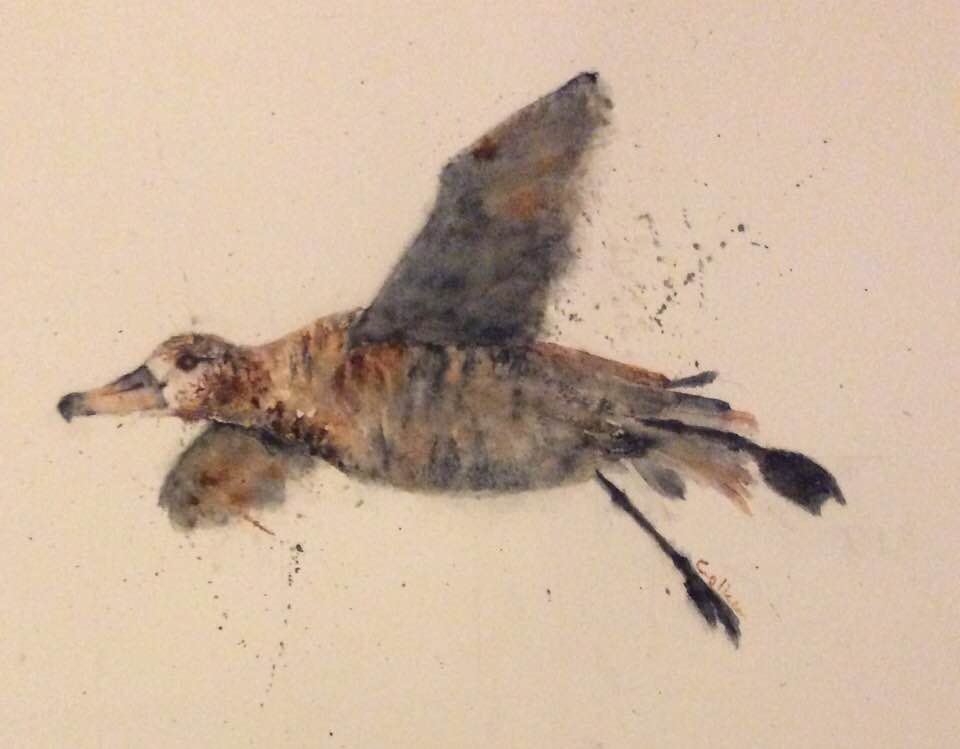
Black-footed Albatross, artwork by Colleen Laird of Artists and Biologists Unite for Nature for ACAP; after a photograph by Vicki Miller
In coordination with NMFS Pacific Islands Regional Office and the Pacific Islands Fisheries Science Center, the Western Pacific Regional Fishery Management Council convened a workshop in November 2017 to explore the potential drivers and implications of the higher albatross interaction rates observed in 2015–2016 in the Hawaii longline fishery. The workshop explored oceanographic variability, shifts in fishery effort and distribution, changes in albatross at-sea distribution, and demography and population trends for Black-footed Phoebastria nigripes and Laysan P. immutabilis Albatrosses.
The report’s long Executive Summary ends:
“In particular, tracking studies at the main breeding sites are needed to determine the degree to which birds overlap and interact with fisheries. While tracking has occurred at three breeding sites (French Frigate Shoals, Midway Island, and Kure Atoll), birds from several sites in the Northwestern (Laysan Island) and the main Hawaiian Islands (Necker, Nihoa, and Kaula Islands) have not been tracked. Workshop participants also stressed the need for continued population monitoring at Midway Island to update the uninterrupted time series of breeding and reproductive success data. They also indicated the importance of resuming breeding population counts at French Frigate Shoals and Laysan Island, two colonies that were historically surveyed by the U.S. Fish and Wildlife Service (USFWS) but are no longer monitored.”
Read more here.
Reference:
Hyrenbach, K.D., Ishizaki, A., Polovina, J. & Ellgen, S. (Eds). 2021. The Factors Influencing Albatross Interactions in the Hawaii Longline Fishery: Towards Identifying Drivers and Quantifying Impacts. U.S. Dept. of Commerce, NOAA Technical Memorandum NOAA-TM-NMFS-PIFSC-122. 163 pp.
John Cooper, ACAP Information Officer, 07 January 2022

 English
English  Français
Français  Español
Español